Differences between back-end and front-end
During the Web development, back-end and front-end play an important role in creating a seamless and fully functional user experience. Although the two complement each other, they have different characteristics and responsibilities. In this article we are going to explore the difference between them by highlighting their respective characteristics.

Backend
It is the part of the web development process that takes care of the logic and functionality that happens behind the scenes. Here, developers focus on data structures, database interactions, security, and information processing. Some of the key features are:
- Programming language: Python, Ruby, Java, PHP or Node.js. These languages allow data manipulation and communication with other systems.
- Servers and databases: Developers work with web servers such as Apache or Nginx, which respond to client requests and send appropriate responses. Additionally, databases such as MySQL, PostgreSQL or MongoDB are used to store and manage data.
- Business logic: The back-end is responsible for implementing the business logic of the web application, defining the rules and algorithms necessary to process the data and generate the appropriate responses.
- Security: Finally, this section also implements security measures to protect users' sensitive information.
Front-end
It refers to the part of the web development process that deals with the user interface and user interaction. Here, developers focus on the visual interface of the web application. Some of the key features are:
- HTML, CSS and JavaScript: The user interface is primarily created with HTML for content structure, CSS for layout and visual appearance, and JavaScript to add interactivity and dynamism to the website page.
- Responsive design: During development, it is important to ensure that web applications are accessible and adaptable to different devices and screen sizes. It involves using custom design techniques and media consultations to create cohesive user experiences.
- User Interface (UI): At this stage, the user interface is designed and developed, including component layout, navigation, forms, and overall interaction with the application.
- User experience (UX): In addition to visual design, the front-end focuses on improving the user experience. This involves considering the usability, accessibility, and responsiveness of the web application.

But what are the differences main?
- Approach: The back-end focuses on the functionality and logic of the system, while the front-end focuses on the visual interface and user interaction.
- Used technology: The back end mainly uses specific programming languages and frameworks, while the front end relies on HTML, CSS, and JavaScript to build the interface.
- Responsibility: The back-end is responsible for data management, security, business rules and communication with other systems. The user interface, on the other hand, is dedicated to visual design, interaction, and user experience.
- Collaboration: In web development projects, back-end and front-end developers often work closely together. The back-end provides the data and logic necessary for the front-end to display information effectively.
- Skills: Back-end developers should have a good understanding of programming languages, databases, and IT security. On the other hand, front-end developers must master web design technologies, have interaction and usability skills, and be aware of the latest trends in user experience.
In summary, back-end and front-end They are two essential components in web development. While the back-end focuses on behind-the-scenes logic and functionality, the front-end focuses on the user interface and user experience. Both work together to create complete and attractive web applications. Understanding the difference between the two roles is crucial to the success of any web development project. Discover at EIP our Full Stack Professional Master's Degree in Web Development.




































